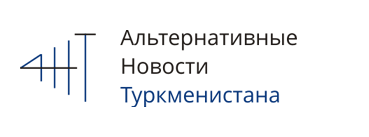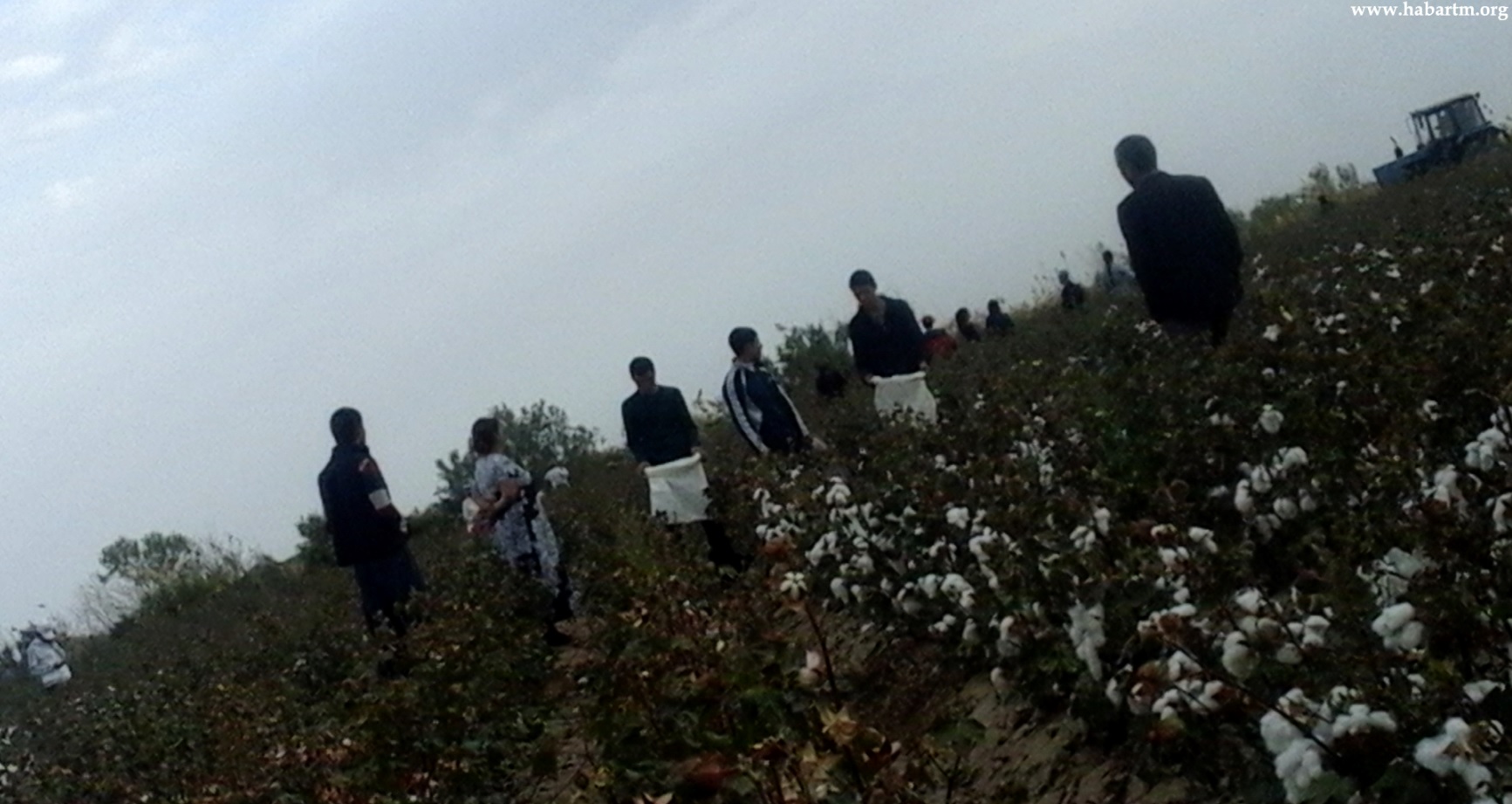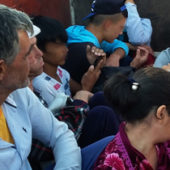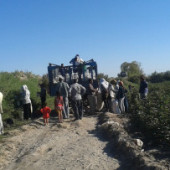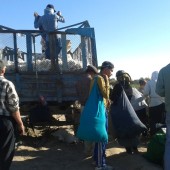February 1, Amsterdam – Despite Turkmenistan’s international commitments to suppress the use of forced or compulsory labor in all its forms, in 2017 the government continued to mobilize tens of thousands of civil servants to pick cotton under threat of dismissal. For the first time in a decade, the authorities have also mobilized masses of children to pick cotton.
For the second year in a row, Turkmenistan ranks last in the U.S. State Department’s Trafficking in Persons (TIP) Report, and some of the world’s largest companies like H&M, IKEA and Inditex have stopped purchasing Turkmen cotton or textiles, citing the ongoing problem of forced labor.
In order to eradicate forced labor and to combat corruption – the authorities have set the latter as priority – Turkmenistan’s leadership needs to manifest political will to carry out land reform, radically revise the relations between the state and farmers, and decentralize the entire cotton industry. Failing to do so, amid the current financial crisis, will inevitably lead to an unsustainable economic situation.
Alternative Turkmenistan News (ATN) is an independent media and human rights initiative founded in 2010 to promote freedom of speech and the rule of law in Turkmenistan – one of the world’s most closed and repressive countries. Since 2013 ATN’s trained staff collects evidence of the state’s use of forced labor during cotton harvesting campaign by visiting the cotton fields to speak to cotton producers, civil servants from various spheres and record their findings and personal accounts of forced laborers. See https://habartm.org/archives/tag/cotton for previous forced labor reports.
PICKING COTTON FROM AUGUST TO DECEMBER
Public sector servants were forced to pick cotton from late August to early December 2017. Public servants in education, health, culture, sport, and telecommunications, as well as military conscripts were compelled to work in the fields with threats, blackmail and other intimidations. If they did not want to pick, they had to pay a daily fee of 10 manats (around $2 in autumn) “for cotton” until December 5. They paid directly to their bosses. The money was allegedly used to hire replacement workers. This unofficial pay-or-pick policy fosters corruption among government officials.
In November and December our school principal hired only a dozen workers as replacements, while the collection of the daily fee continued for several dozen teachers and staff. In most cases people preferred to pay and forget about it as working in a cotton field is a hard job. At the same time, there were principled teachers who refused to pay the fee from their own pockets and went to pick cotton themselves at the expense of their educational commitment. Every time such teachers would be reprimanded by the administration, because they supposedly picked less than the required daily quota of 50 kg, or because their absence at school affected the educational process.
However, nobody really cared about the quantities of cotton collected as this was all about their refusal to pay money. The corruption scheme is supposed to function like clockwork: say, 100 people work in a school and each of them contributes 10 manats for cotton. This means that daily revenue of the school administration is 1,000 manats. From this pot, the administration hires around 20-25 unemployed people, paying them 10 manats each to work in the cotton fields. The total expenditure is unlikely to exceed 250 manats. The rest is split between the school principal and his supervisors at the local department of education. With this scheme, the higher-ups end up making the equivalent of a one-year salary in just four months of the harvest – a teacher from Turkmenabat, a city in eastern Turkmenistan, said.
Replacement workers and, in smaller proportions, principled public servants, were forced to go to the fields even in adverse weather conditions, in the absence of basic amenities like drinking water, food and places for rest, even after the cotton harvest was officially declared complete. On the eve of Turkmenistan’s Independence Day, October 27, the governors of all four cotton-producing regions told the president that the year’s harvest plan had been fulfilled. But even after having reached the milestone of 1.05 million tons of cotton, the officials continued to organize mass work expeditions to the fields. After October 27, the number of forced laborers even increased, and stricter control was exerted over daily quotas.
PICK COTTON EVEN IF THERE IS NO COTTON
The 2017’s harvest was poor. Bad weather conditions and improper irrigation, as well as poor quality of the cotton seeds, lack of equipment and ignorance of agricultural techniques – these all contributed to the low crop. Poor-quality cotton was collected in Ahal province as well as in most of the districts of Lebap province and in 3-5 districts in Mary and Dashoguz. In these regions, local administrators turned a blind eye on the workers’ rights and basic laws, instead pushing for a mass mobilization of the population for the harvest.
Administrators faced growing problems in fulfilling the state plan due to the lack of cotton. In Ahal province, where such strains seldom show, the mobilization of public servants was massive compared to previous years. In addition, the governors of Ruhabat and Baharly districts even violated the ban on child labor to ensure the largest possible number of cotton pickers. By their secret order, the local education department even sent a memo to the schools in these districts to organize the mobilization of children for the harvest during the fall break.
At the end of October, for 7 to 10 days truckloads of children were sent to the cotton fields. The authorities, police, and prosecutors turned a blind eye towards this gross violation of children’s rights, and not a single official took responsibility for this, a source in Baharly district told ATN.
“The situation [with the cotton harvest] must have been so dire that they even sent the school pupils,” a teacher from Ruhabat district said. She added that teachers were also sent to the fields to collect the cotton residues from plants that had been already harvested. Teachers were forcibly sent to the fields and thus left without holidays.
In the past the practice was similar, but less strict. You could ask the principal to give you time off or find other excuses to avoid being sent to the field. However, this year was a nightmare. It was impossible to convince school principals. They simply said that everyone had to go and there was nothing they could do. Some pregnant teachers showed the principal a doctor’s certificate to be excused from field work due to the threat to the fetus, but he forced them to go too. In addition, he ramped up the collection quota to 60 kilograms. Unsurprisingly, no one could fulfill the quota, first because there was not enough cotton in the fields in November, and because 60 kilograms is quite a lot to collect. Everyone heard reproaches and curses for failing the plan – a teacher said.
On November 23, local correspondents of Radio Azatlyk (RFE/RL Turkmen service) also reported about mobilization of teachers in the cotton fields. The teachers had to provide a certificate confirming their participation in the harvest. Among them, a few female teachers who could not work hired local unemployed residents to replace them for 10 manats per day.
“However, several teachers found another way to escape the harvest. They gave 20 manats (less than $4) per day to the school principal, so that he would take care of finding a replacement worker and deal with reporting the quantities of cotton collected to higher officials,” Azatlyk reported.
Hardships in the cotton harvest in Ahal province pushed the local authorities to hire workers to pick cotton from the military ranks. ATN sources from Ahal confirmed the participation of conscripts from units stationed around Ashgabat. Radio Azatlyk also confirmed their participation in its report from November 23. The conscripts had to collect 60 kilograms per day, but they were not paid for the task. Failure to fulfill the quota inevitably led to public reprimands and humiliations inflicted by their superiors.
ATN sources reported a massive use of forced and child labor in several districts of Dashoguz, Lebap and Mary provinces, where, according to agronomists, that year’s cotton had grown stunted and full of weeds due to careless management of the fields. Despite this, the governors of these provinces told the president that the harvest had been completed on October 23. The government of the northern Dashoguz province also claimed that the plan had been fulfilled, although a mass mobilization to clean up raw cotton began only 15 days after the official start of the harvest campaign.
Besides forced mobilizations, in regions and districts where cotton grew in smaller quantities, reports highlighted tampering with official statistics regarding the quality and volumes of cotton collected. Local administrators inflated the numbers to fulfill the plan on paper, to ensure their personal enrichment and avoid dismissal.
Mammethan Chakyev, director of the State Service for combating economic crimes, confirmed the illegal manipulation of the statistics. Speaking at a session of the Council of Ministers in Turkmenabat on November 27, he mentioned the case of the governor of Galkynysh district, Kadyrov, his deputy for agricultural affairs, Achilov, and the director of the local cotton processing plant, Halniyazov. Through fraudulent schemes they pumped up the count of harvested cotton to 800 tons. Chakyev said these officials were put under investigation. He also mentioned that similar practices were uncovered in other regions. Although he did not disclose any other figures regarding quota frauds, it would be easy to infer the enormous potential for fictitious inflation of cotton production, given that a few officials in just one small district managed to add as much as 800 tons to the record of the real harvest.
There have been other signs of mass forced labor mobilization and of manipulation of the production statistics. “There’s still enough cotton in the fields,” chairman of the High Control Chamber of Turkmenistan Chary Gylyjov said during a cabinet meeting in Mary on November 28, more than one month after the harvest had been confirmed as complete. He added that “additional volumes could be obtained by employing both manual laborers and, if necessary, special machinery.”
Cotton collection in certain parts of Turkmenistan continued until mid December despite temperatures plummeting below zero degree.
“WE WORKED LIKE SERFS”
An ATN source from Oguzhan district in Mary province noted that scores of cotton pickers were forced to work in either private fields or lands leased long-term by wealthy landlords or high government officials.
“In the 1990s, a few dozen people secured between 25 and 50 hectares of land each in Howuzhan area. To become a landlord they used their political influence or simply gave bribes. These are the new Turkmen landlords that grow cotton, but they have no desire to bend their backs and pick cotton in the fields. This is why the local government forcibly mobilizes thousands of people from Mary, Bayramali and other cities to work in fields owned by rich landlords. Is this not serfdom?” a local resident told ATN.
The same issue is common in other regions. In Dashoguz province, for example, most public servants are sent to the Shasenem virgin lands in Ruhubelent district. In different years, large plots of land there were taken by former government officials. The total square of private or long-term leased land is estimated at 3 to 5 thousand hectares.
The staff of public utility services is among the first to be mobilized for cotton harvesting. If you refuse or resist, you will lose your job, and the boss will happily hire someone else for your job and even get a bribe for it. Unemployment is so high in Dashoguz that bosses won’t have hard time finding your replacement. The cotton harvest feels like serfdom because you go to work in a rich man’s land. Sometimes the landlord would even approach the edge of the field and give looks of approval to the incoming toilers, just like a slave owner. In November, we worked in a field of 50 hectares owned by a former high-level official. There were many of them here in Ruhubelent and they were different from each other. Most of them were stingy, like many wealthy people; they preferred to pay as little as possible, they were negligent regarding working conditions and even shouted at us, as if we indeed were their serfs. But there were also good landlords, who provided fresh water and hearty lunches for the workers and treated us humanely. Landlords of the latter kind represented a tiny minority, but they existed. When you are sent to Ruhubelent, you never know if you will be working for a good landlord or a mean one – an employee of the utility department in Dashoguz described his experience picking cotton.
People were happy to work where they could receive a pay of 0.2 manat per kilogram of cotton, and where they were treated respectfully. However, such conditions were rare. The only way for public servants and replacement workers to protest the conditions of forced labor was to pick less.
A cotton picker in Turkmenabat, working for Lebapbalyk fish enterprise, explained why:
My boss ordered that I go to the field for a one-month shift. He said that then someone else would come and replace me. I remained silent. Had I talked back I could have lost my job. Given that we were forced to go to cotton and were under constant threat of dismissal, most people worked in the fields for just another day to pass. Why not? While we were picking cotton our salaries were paid anyway. Nobody really bothered to work hard in the field. People would collect a bunch of cotton in their aprons and rest their heads on it sleeping between the cotton plants. When the weather was nice, women brought their knitting sets; men played cards or fished in the streams nearby. In general, we stretched our workday only to let it pass and to avoid being nagged by the boss at work. It was difficult to eat well, stay properly clean and sleep comfortably. People with family had it even more difficult, because they were separated from their loved ones for a long time – he said.
RECOMMENDATIONS
Below is a list of issues that the government of Turkmenistan needs to look at in order to streamline the process of cotton cultivation, to slash costs for the whole industry, to make cotton production effective, and to reduce and eventually ban the massive use of child and forced labor in the fields.
Unfortunately, the Turkmen government so far has ignored previous recommendations from ATN and its partners in the Cotton Campaign. Moreover, the 2017 harvest campaign showed that the situation has not changed for the better and in some cases has even worsened. Therefore, we urge the Turkmen government to consider the following:
- Implement land reform and improve the relations of production in the cotton industry, by giving land ownership to cotton producers.
- Improve the performance of cotton labor by increasing procurement prices, taking into account inflation and currency devaluation. Today, the state pays the farmers 1,650 manats ($471 at official rate or $165 at a market rate) for a ton of cotton. This fixed amount hasn’t changed since 2015.
- Revise the old long-term leasing contracts, which granted large plots of virgin lands (from 15 to 100 hectares) to private landlords. These plots are so large that the landlords are unable to carry out the harvest by themselves, and thus make extensive use of forced and child labor.
- Improve farming standards by ensuring compliance with the latest technology for the cotton production, so as to maximize the productivity of non-manual cotton collection.
- Improve the economic literacy of cotton producers, through the organization of trainings and seminars on a wide range of issues related to cotton production and on strategies to increase profits.
- Comply strictly with the rules and deadlines when providing necessary utilities to service the fields; carry out maintenance for cotton plants and supply fertilizers on time. Privatization of government agencies in charge of the sector could reduce public spending and improve the quality of the services offered to the farmers.
